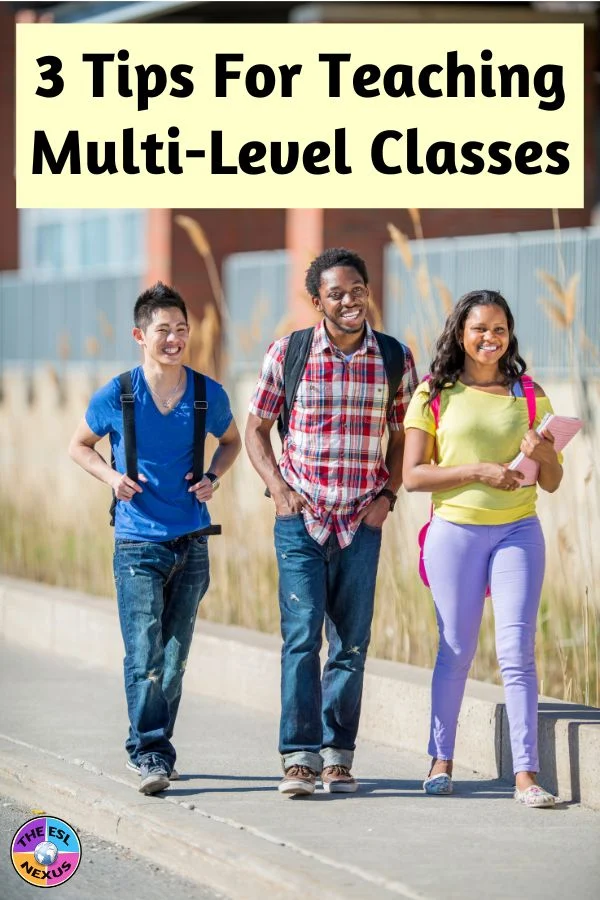Did you know there are more than 600 varieties of strawberries? Or that strawberries are part of the rose family of plants? That they have more Vitamin C than oranges? That in the Indigenous Narragansett language, the word for “strawberries” is wuttáhminneash, which means “heart-shaped berries”? And that a strawberry shrub is not just a plant but also a delicious non-alcoholic drink? (You can get a link to a shrub recipe and photo at the end of this email.)
You’re probably wondering what the connection is between strawberries and teaching English Language Learners. Well, when I read that there are 600 different kinds of strawberries, that made me think of all the different kinds of backgrounds ELLs have. That in the classroom, that typically means multi-level classes.
I don’t know if cultivating different strains of strawberry plants is easy or not but I do know that teaching multi-level classes can be very challenging. If you’re not careful, you can spend way too much time trying to create lessons for a wide range of abilities.
 |
| Graphic created by The ESL Nexus |
But it doesn’t have to be like that! Here are 3 ways you can create lessons to meet the needs of all the students in your multi-level classes:
Do Projects
I don’t necessarily mean project-based learning, just research or reading and writing activities where the students are responsible for creating something.
* Start off by providing the foundation or the background or introductory info students need to complete the project.
* Then let the students go off and use materials at their appropriate skill and proficiency levels to do whatever activities you’ve given them.
* It does mean you’ll need to have materials at different levels available but they can be sourced from the library or Internet, and once you’ve found or acquired them the first time, you’ll have them for the future.
Having students do projects means they have to take more responsibility for their learning. But they are using what they know, applying it to new knowledge they acquire, and using that learning to produce something that shows they understand what they were supposed to learn.
Design a Master Lesson Plan and Build In Supports
* Create one master lesson plan that includes the objectives of the lesson, with sections in your lesson plan that explicitly explain how students at different proficiency levels will achieve those objectives.
* In those sections, state the supports that students at various proficiency levels will use. Supports can be things like visuals, audio recordings, videos with and without captions, leveled books, info in translation, using sentence frames and sentence starters, reducing/increasing the amount and/or of required writing, modifying the required language structures required in written work, modifying the type of assessment used but without sacrificing the need to demonstrate understanding of the content.
* Even if you’re not in a WIDA stream their Can-Do Descriptors are great for giving ideas about what ELLs at different proficiency levels should be able to do so you can use them to modify your core lesson plan. This webpage links to the descriptors for the grade spans from kindergarten through 12th grade.
Use all Modalities When Giving Instructions or Teaching a Concept
* Speak the directions. Speak more slowly than you would normally to give students time to process the information.
* Write directions on a board or screen. Students can reread the instructions at their own pace and won’t have to ask you to repeat what to do.
* Ask other students paraphrase directions or information in English. This helps you determine if the class understands what they have to do.
* Ask a student to translate the directions or info in an L1 for a true beginner, or use technology to translate it. If, after trying other ways first, a student still doesn’t understand, translating the info into that student’s native language can help clarify what to do.
* Use movement to explain things. Total Physical Response (TPR) is helpful as is just getting students to mimic the motions you do. Physically demonstrating directions helps students visualize what they should do.
And here’s the link to my recipe for a strawberry shrub. To save you some time, I’ve cut out a couple steps I think aren’t necessary. At the end of the recipe there’s a photo of the strawberry shrub I made recently.
Enjoy and stay cool!
